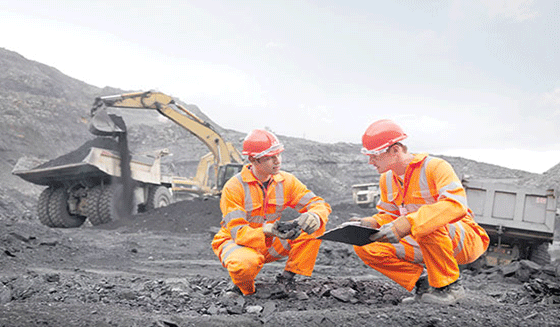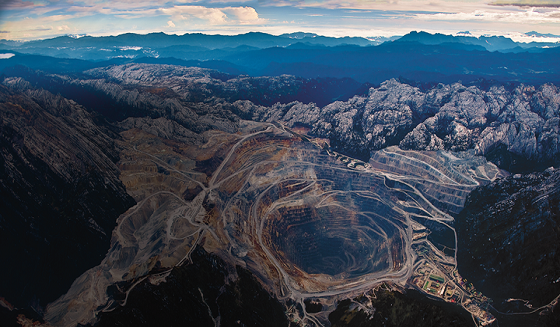
Mining is a crucial industry for Manitoba
November 29, 2015
The top ten issues facing miners in 2016
December 6, 2015A couple of weeks ago, mining and metals analysts at Barclays put out a research note warning investors that while the sector is having its worst run in fifty years better days aren’t necessarily around the corner.
This is how the investment bank summarized the current state of the industry when it downgraded the entire sector:
“The last 5 years have now been the worst period of performance since 1966: Looking forward it is hard to see what might pull the sector out of its tailspin. A demand shock seems unlikely given the state of China’s economy, although there are some signs of near term improvement (M2, property starts, TSF growth).
“Pinch points in supply/demand are getting pushed back implying marginal costs will govern pricing for longer. Costs themselves are under negative pressure.
“Meanwhile, returns on equity are sub cost of equity following unprecedented capex/depreciation levels, and net debt as a proportion of enterprise value is at an all time high. Finally one has to sift through valuations to find metrics that support an investment case.”
Two weeks later and their caution seems justified.
Copper is hovering not far off 2009 levels after coming dangerously close last week to falling through the psychologically important $2 a pound level. Iron ore spot prices seems destined to enter the $30s before the end of the year – prices last seen in 2007.
The price of nickel last week dipped to close to $8,000 for the first time in more than a decade and today’s price compares with a 1993 to 2015 average of $13,600 a tonne.
Australian thermal coal prices hit a high in July 2008 within shouting distance of $200 a tonne but is now averaging in the $50s. Coking coal’s fall has been even more spectacular with premium coking coal falling to $75 a tonne, the lowest since tracking of the spot price first began.
Share valuations have continued to fall in tandem with commodity prices.
And what little upside potential still existed for BHP Billiton (NYSE:BHP) and Vale (NYSE:VALE), the Brazil environmental disaster killed that off too.
World number one BHP had another down day in New York on Monday as investors react to the news of a “preliminary” $5 billion-plus fine against Samarco, its iron ore joint venture with Vale following a deadly dam burst in Minas Gerais state.
The value of the Melbourne-based company has been cut in half over the last year for a market capitalization of just under $70 billion, a decade low. That compares to $270 billion in 2011 when it briefly became the fifth most valuable publicly traded company in the world, ahead of giants like Chevron and Microsoft.
Vale was already one of the worst performers in the sector but on Monday American Depositary Receipts of Vale trading in New York plunged another 9.5% bringing losses for the Brazilian company year to date to an eye-watering 63%. The Rio de Janeiro-based company is the world’s number one producer of iron ore, ahead of Rio Tinto (NYSE:RIO) and BHP and also holds the top spot for nickel output.
The company’s market value ascended to just shy of $200 billion in January 2011, ahead of its main rival Rio Tinto, but is now worth less than $18 billion compared to $60 billion for The world’s second largest miner based on revenue Rio Tinto.
Melbourne-based Rio Tinto which relies on copper and iron for nearly 80% of its earnings are also trading not far off lows hit during the height of the global financial crisis, but year to date losses are modest compared to its immediate peers. The Anglo-Australian giant’s stock has been swinging wildly this year and is down more than 28% since the start of the year.
Glencore (LON:GLEN) made solid gains on Monday as the stock recovers from record lows hit September over worries about its debt load. The $21 billion company was first floated in May 2011 and two years later the Swiss commodities trader acquired coal giant Xstrata, turning it into the world’s fourth largest miner. Down two-thirds just this year, Glencore is now worth $14 billion less than before the Xstrata takeover.
Anglo-American (LON:AAL, OTCMKTS:AAUKY), the world’s fifth largest publicly held mining company in terms of output gained in New York on Monday, but its ADRs are still 66% cheaper than at the start of the year.
The company with roots in South Africa going back more than a century is, despite its exit from gold mining, arguably the most diversified of the majors thanks to its exposure to diamonds (accounting for around 25% of its earnings) through De Beers and its holdings in Anglo American Platinum.
But the slump in rough diamond prices and the platinum bust has seen its market cap tumble to $8.5 billion. Anglo now trades an astonishing 87% below its 2011 high when it was worth $67 billion.
Source: www.mining.com



